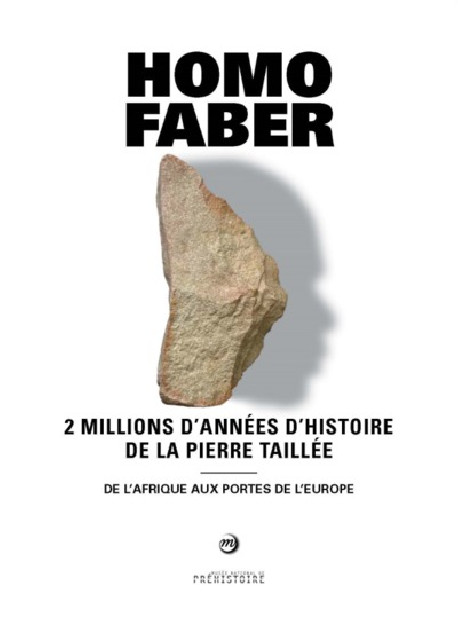No products
Product successfully added to your shopping cart
There are 0 items in your cart. There is 1 item in your cart.
Our webstore uses cookies to offer a better user experience and we consider that you are accepting their use if you keep browsing the website.

Exhibition catalogue
- New Art Books
- Exhibition catalogue
- Highlights
- Art Book Sale
- Museum's Shop & Gifts
- Bilingual art books and foreign editions
- Children's Books
- Art History
- Painting
- Architecture
- Sculpture
- Drawing & Engraving
- Photography
- Contemporary art
- Decorative Arts & Design
- Art Techniques
- Critics
- Entertainment art books
- Civilisations
- Partners Reviews
Homo faber - 2 million years of carved stone history
Based on the technological reading of lithic assemblages and on the most spectacular studies (climatic, demographic pressure, paleobotany...) and thanks to the miraculous conservation of the Dmanisi site, the book aims to show how hominids would have emerged from the African cradle and then rapidly conquered Eurasia in only 200 000 years.
| Model | 9782711875030 |
| Artist | Préhistoire |
| Author | Jean-Jacques Cleyet-Merle, Jean-Philip Brugal, Ana Mgeladze, Pierre-Jean Texier |
| Publisher | RMN / Musée des Eyzies |
| Format | Ouvrage broché |
| Number of pages | 168 |
| Language | Bilingue Français / English |
| Dimensions | 280 x 225 |
| Technique(s) | 110 illustrations |
| Published | 2021 |
| Museum | Musée des Eyzies, Tayac |
Exhibition Catalogue Homo faber - 2 million years of carved stone history. From Africa to the gates of Europe, presented at the National Prehistory Museum, Eyzies de Tayac (from 25 June to 15 November 2021).
The catalog addresses two themes: The first concerns paleoanthropology, paleontology and material cultures of prehistoric Africa between 3.3 and 1.7 million years ago, with a focus on the Turkana basin and the Kenyan sites .
It is in Africa, for about a million and a half years that it has been observed through the study of materials that hominids begin to master little by little the two dimensions then pass to three dimensions, proof of immense cognitive progress.
The second is dedicated to the Dmanisi site (Georgia) where the same types of objects have been found as those discovered in Kenya. Many objects are reproduced such as stone tools, the most representative faunistic elements and especially the skull of a hominid.
Based on the technological reading of lithic assemblages and on the most spectacular studies (climatic, demographic pressure, paleobotany ...) and thanks to the miraculous conservation of the Dmanisi site, the book wishes to show how the hominids would have emerged from the cradle African and would then have quickly conquered Eurasia in just 200,000 years.
Recently viewed items









